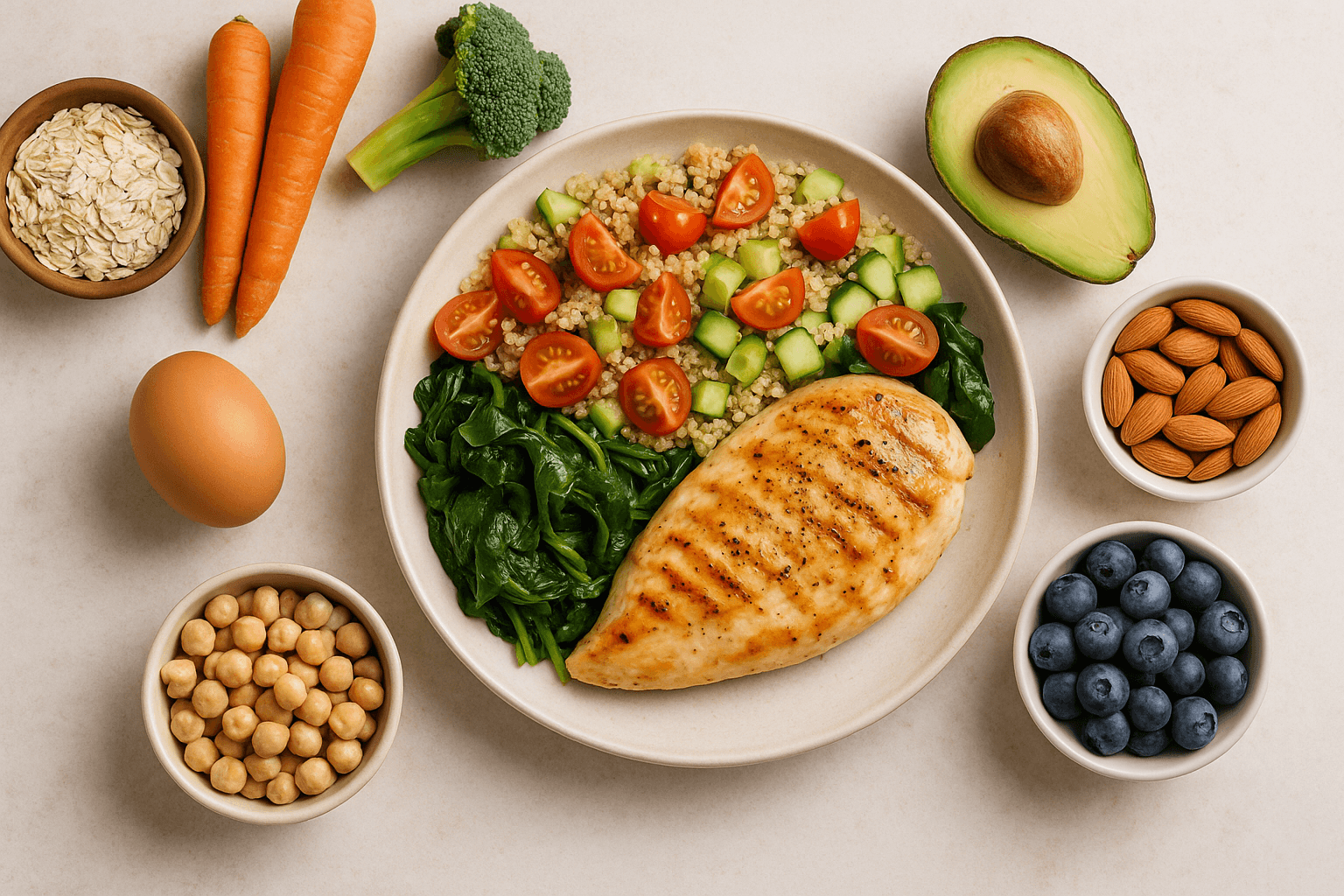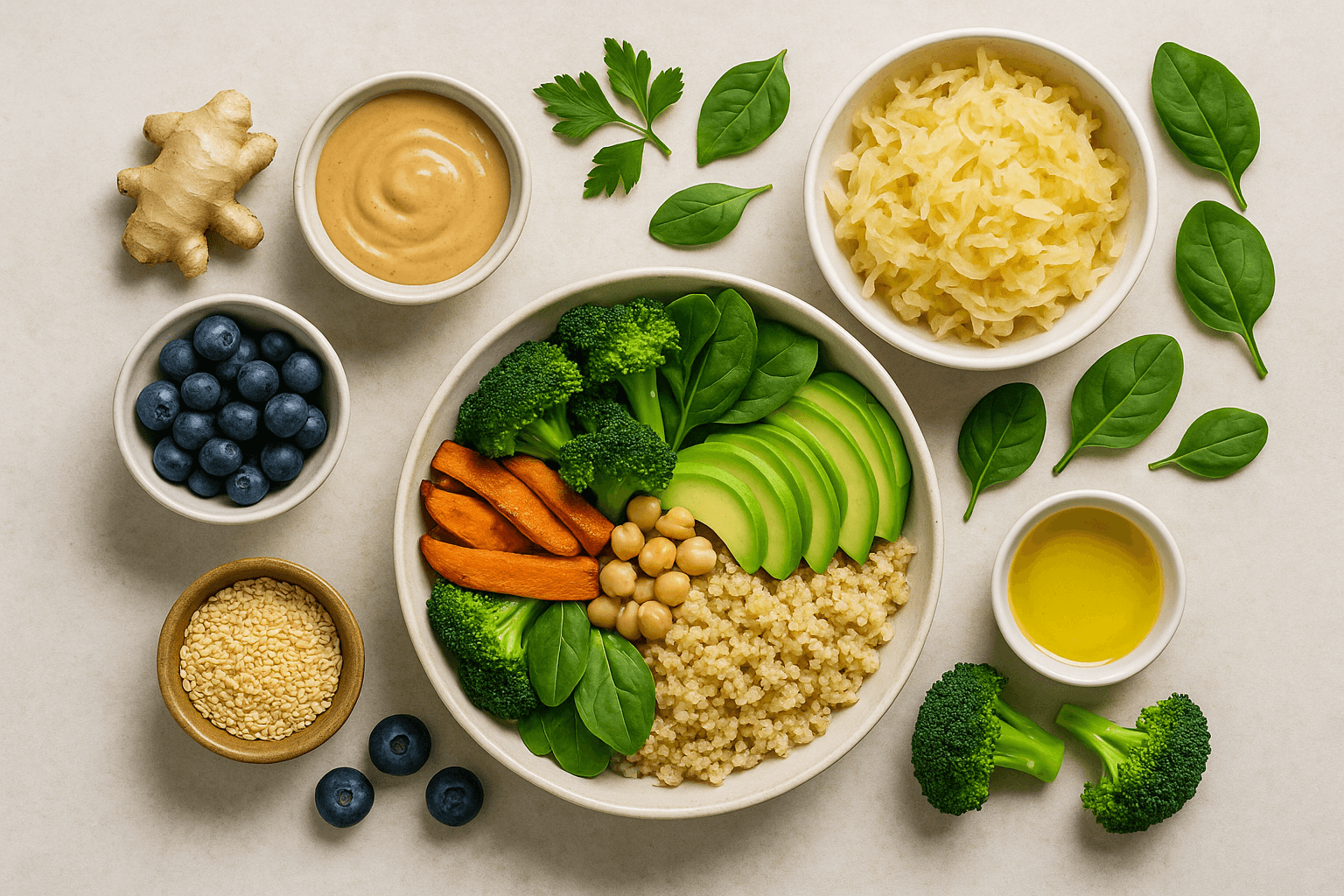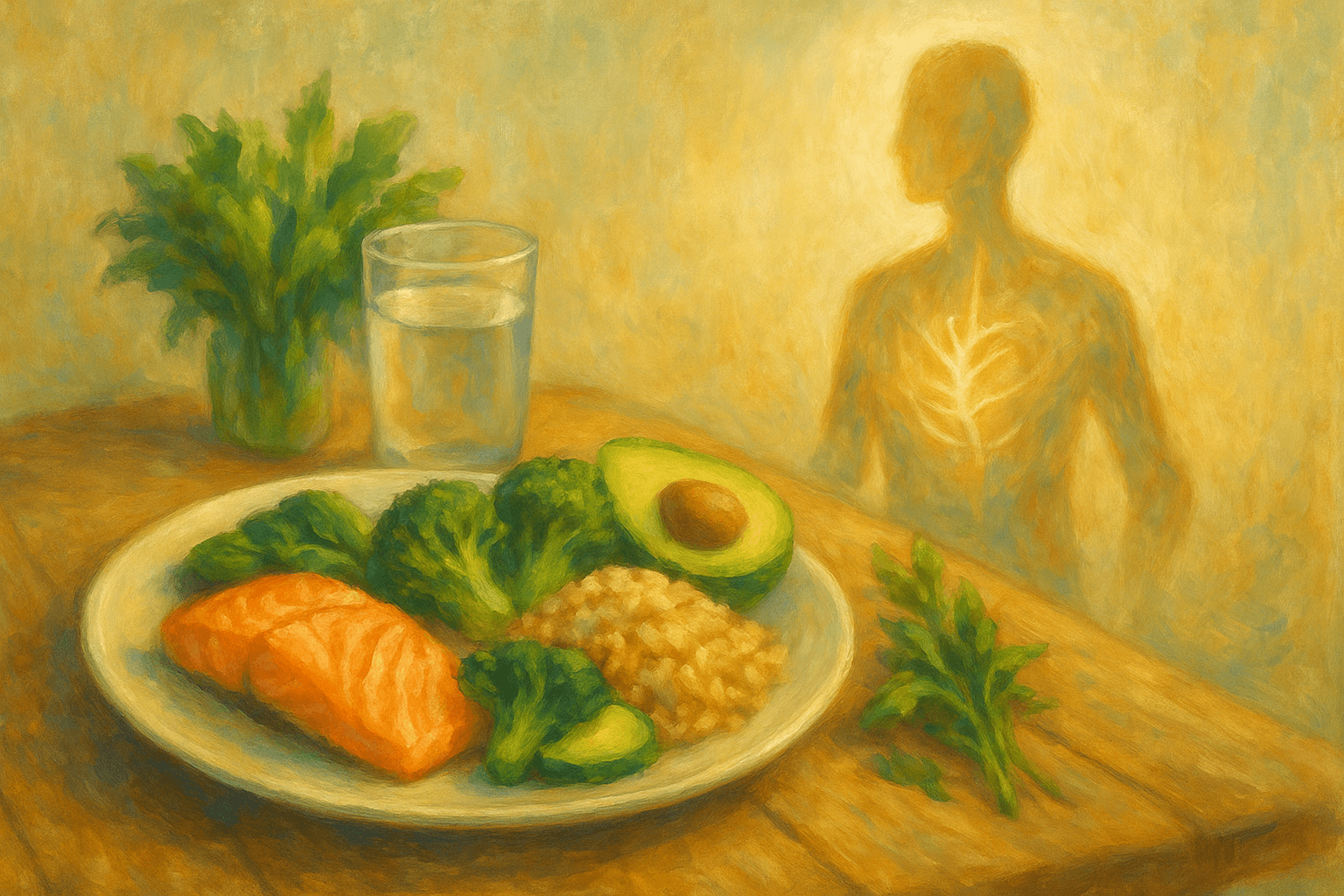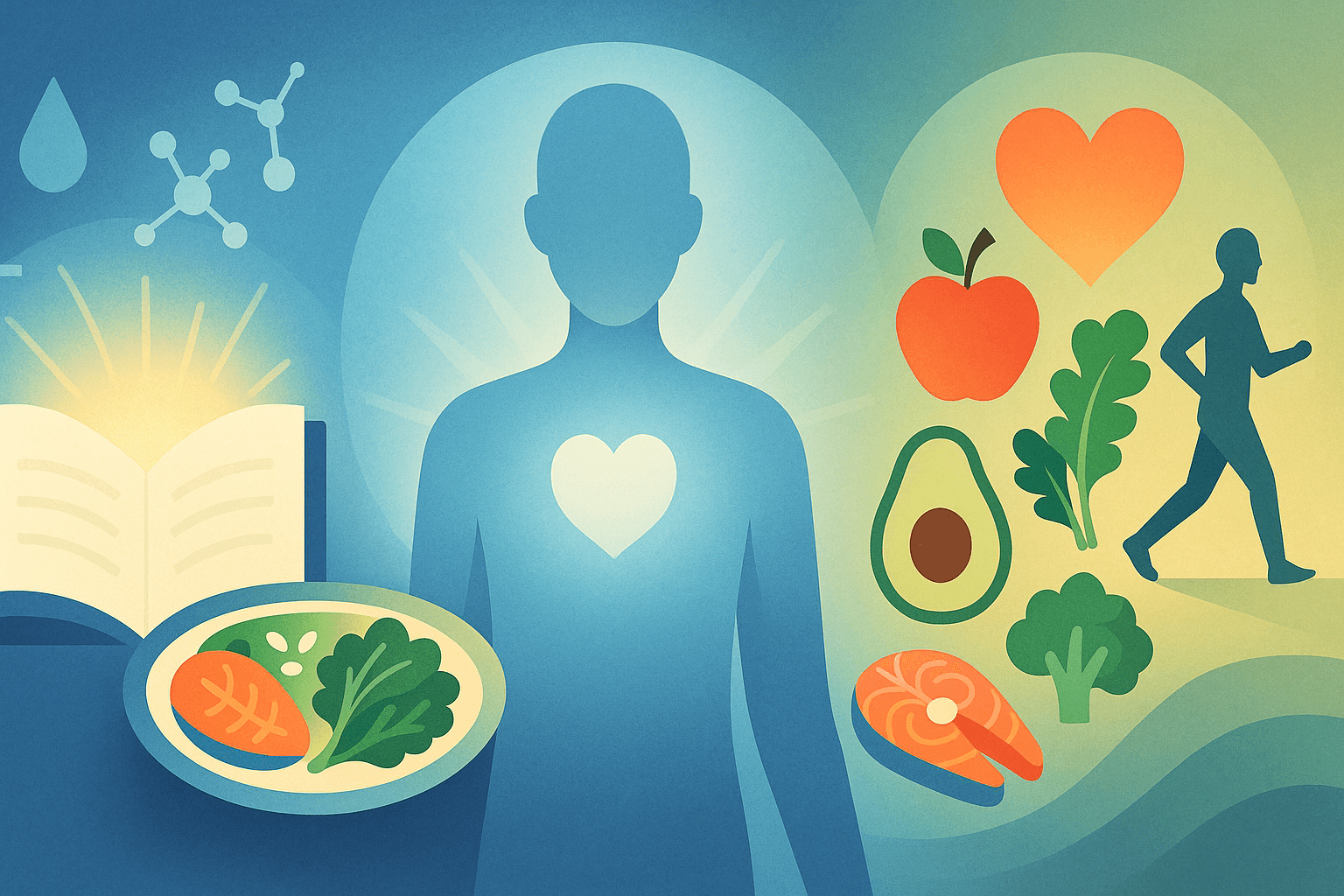Eating for Blood Sugar Control: Practical Strategies for People Living with Diabetes
Published on August 26, 2025

If you or someone you love has diabetes, you know food is not the enemy — it’s one of your most powerful tools. Smart eating routines help stabilize blood sugar, boost energy, and lower long-term complication risks.
Know the Facts: Carbs, Glycemic Load, and Combining
Carbohydrates impact blood sugar the most — but not all carbs are created equal. Glycemic load (GL) helps measure the true effect of a portion.
Aim for:
Moderate-carb foods: lentils, chickpeas, oats, non-starchy vegetables, berries
Whole over processed: brown rice over white, whole fruit over juice
Pairing tip: Combine carbs with protein, fat, and fiber to blunt glucose spikes
Example: Whole grain toast + avocado + egg
Pro Tip: Use a CGM or meter to track how your body reacts post-meal
Meal Journaling: Log meals, portion sizes, and glucose levels to identify patterns
The Power of Regular Eating
Avoid long gaps and erratic eating — they can spike or crash blood sugar.
Try this rhythm:
Eat every 4–5 hours
Include protein and fiber in every meal
Snack only when hungry or glucose is trending low
Bonus: Eating at the same time daily supports your insulin rhythm
Life Hack: Use phone alarms to stay consistent
Portion Awareness Without Obsession
No need to weigh every bite — just be aware.
Plate guide:
½ plate: non-starchy veggies
¼ plate: lean protein
¼ plate: complex carbs
Add: healthy fat (olive oil, seeds, nuts)
Simple tools:
Hand method (clenched fist = carbs, palm = protein, thumb = fat)
Smaller plates naturally reduce portion size
Real-World Tip: Pause mid-meal to check in — are you full?
Mindful Eating Add-On: Eat at a table, away from screens, for better satisfaction
Smart Snacking: Small, Balanced, Intentional
Snacks should sustain — not spike.
Better combos:
Apple + peanut butter
Greek yogurt + walnuts
Cheese + cucumber
Hard-boiled egg + grapes
Edamame + sea salt
Celery + tuna
Avoid:
Chips, crackers, sugary bars
Juices and smoothies packed with sugar
Snack Rule: Choose 2 of 3: protein, fiber, healthy fat
Evening Tip: Craving sweets? Try cinnamon herbal tea or a square of 70% dark chocolate
Snack Prep: Fill a snack box weekly with ready-to-grab healthy options
What You Drink Matters
Liquid sugar can sabotage good habits.
Better choices:
Water (infused with citrus or herbs)
Herbal tea
Unsweetened almond or oat milk
Black coffee or plain tea
Sweetness Tip: Use cinnamon or vanilla extract instead of sugar
Hydration Hack: Drink water first thing in the morning
Bonus Habit: Keep a water bottle with you at all times
Meal Planning = Blood Sugar Peace
Even a rough plan beats last-minute sugar-heavy choices.
Base meals on:
Protein (chicken, beans, tofu)
Vegetables (greens, cauliflower, etc.)
Complex carbs (lentils, quinoa, sweet potatoes)
Sample plate:
Grilled salmon
Roasted Brussels sprouts
½ cup quinoa
Olive oil + lemon
Prep Hacks:
Batch-cook grains and proteins
Use frozen veggies
Pre-chop ingredients
Boil eggs, prep soup, and keep snacks visible
Kitchen Setup Tip: Remove high-GI temptations from sight or the house
Dining Out Without Derailing
Eating out with diabetes is doable — be tactical.
Before:
Check the menu online
Decide ahead of time
At the table:
Ask for dressings/sauces on the side
Choose grilled over fried
Swap fries for salad
Box half the meal before eating
Drink Smart: Lemon water or unsweetened iced tea
Mindful Dining: Enjoy the people, pace, and how you feel — not just what you eat
Moving After Meals Helps
Post-meal activity improves glucose levels and digestion.
Ideas:
10–15 min walk after dinner
Do light chores or stretches
Try gentle yoga
Bonus: Increases energy and insulin sensitivity
Social Tip: Walk with a friend or family member to boost habit formation
Final Thoughts: Progress Over Perfection
Managing diabetes isn’t about rules — it’s about building helpful habits.
Simple swaps add up:
Water instead of soda
Fresh over dried fruit
Consistent meal times
More home cooking
Be kind to yourself. Let your glucose — not guilt — guide your progress.
Remember: You’re doing better than you think. Every small win counts.
Stay tuned for our next article — a weekly diabetes-friendly meal plan you’ll actually enjoy.








